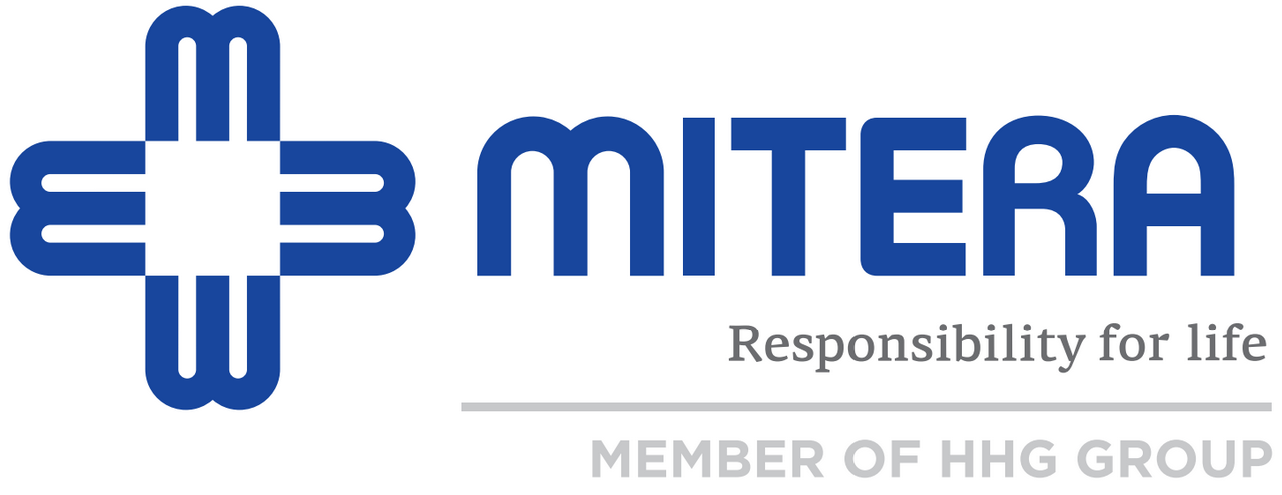Weaning: Gradual introduction of creamy and other solid food to a baby’s diet
Solid food is gradually introduced to a baby’s diet, alongside its previous diet of breast or formula milk, at around four to six months. This process is called weaning.
Written by
Georgios Hatzigeorgiou
Paediatrician
Scientific Partner of MITERA Children’s Hospital
Weaning serves the following: a) covering the increased calories demand of the baby that will ensure its normal development, b) obtaining experience with food of various composition, taste and flavour, and, c) familiarisation with chewing and swallowing. Most of the babies are mature enough to eat solid food from the age of 4 to 6 months. Before that age, babies are not able to control and synchronise their tongue and mouth muscles that are necessary for chewing and swallowing. In that age babies instead of swallowing food they use their tongue to remove food out of their mouth. This particular reflex action known as “tongue thrust” fades by around 4 months of age.
Baby is ready to eat solid food when he can sit with support and keep his head steady enough. The tongue thrust reflex should be faded and the baby should seem hungry (he leans his face towards the spoon and opens his mouth). Solid food can replace milk.
Comforting conditions such as soft music and talking should contribute to the success of the first attempts to feed the baby with solid food. Solid food should be given in a small spoon and not with a feeding bottle since there is always the risk of choking or overfeeding. Feeding should start with a very small amount of solid food (1/2-1 teaspoon). In the first day of solid food introduction, 1 to 2 teaspoons of food is an adequate food quantity. This quantity should be progressively increased by 1-2 teaspoons per day while the total quantity of food given to the baby should be about 120 grams. However, the baby’s appetite is the best indicator. Give your baby one new food at a time, and wait about 1 to 2 weeks before starting another. After the introduction of new food, watch for any allergic reactions such as diarrhea, rash, or vomiting.
At the beginning, the baby could seem “confused” like he dislikes food; avoiding swallowing or even spitting food. All these are normal reactions since eating solid food is a new experience for the baby. A good way to help the baby adjust quickly to the introduction of solid food is to give him some breast or bottle milk before the solid food. Then you should give the baby a very small amount of solid food (1/2 teaspoon) and then give the baby as much milk as he likes. At the beginning, solid food should not substitute breast or formula milk. In that way the baby will not be stressed because of his hunger. If this tactic fails, the introduction of solid food into the baby’s diet can be delayed for about 1 to 2 weeks. Eating solid food is a gradual process that differs between babies. Especially for premature babies this process can be slow and difficult.
Milk and flour puddings currently available in the market are enriched with iron, vitamins, phosphorus and trace elements. Rice flour pudding can be introduced to a baby’s (4-8 months old) diet. This cream is enriched with iron and is free of gluten. Moreover, it may trigger allergies on a very rare basis. Rice flour pudding can be mixed with breast or formula milk in order to obtain desirable texture that satisfies baby’s criteria.
The gradual introduction of creamy food made of fruit as well as vegetables, meat, egg yolk, poultry, fish, pasta, cheese, yogurt and legumes follows. Creams containing mixtures of cereals or wheat flour should be introduced to a baby’s diet after the age of 8 months since their can trigger allergies. Healthy nutrition is based on food’s diversity.
Babies should be also given water during the weaning period and especially during summer months. Fruit juices should be introduced after 6 to 8 months of age and to be served in a cup to avoid caries formation or any potential diarrheal symptoms. A daily amount of about 120-180 ml of fruit juice is adequate since it leaves the baby hungry enough to eat other important foods. Egg yolk, cow milk and honey (salmonellosis) should be avoided up to the age of 1 year. Sweet deserts should be given in small quantities as meal substitutes and not supplementary.
As a conclusion there are no strict rules as regards the time to introduce solid food as well as the types of solid food and their sequence. The paediatrician should guide parents throughout the weaning process. However, the following table summarizes some guidelines regarding the type and introduction time of various solid food to a baby’s diet.
4-8 months | Rice flour pudding enriched with iron |
6-8 months | Fruits, other cereals, vegetables and fruit juices |
7-10 months | Mashed fruits (banana, apple, pear), vegetables, egg yolk (the egg should be boiled for 6-7 minutes), chopped meat or chicken |
9-12 months | Combination of soft foods such as pasta, cheese, yogurt and beans |
After a year | Cow milk |
It is well known that breast milk is the healthiest and ideal diet for babies particularly for the first six months.


